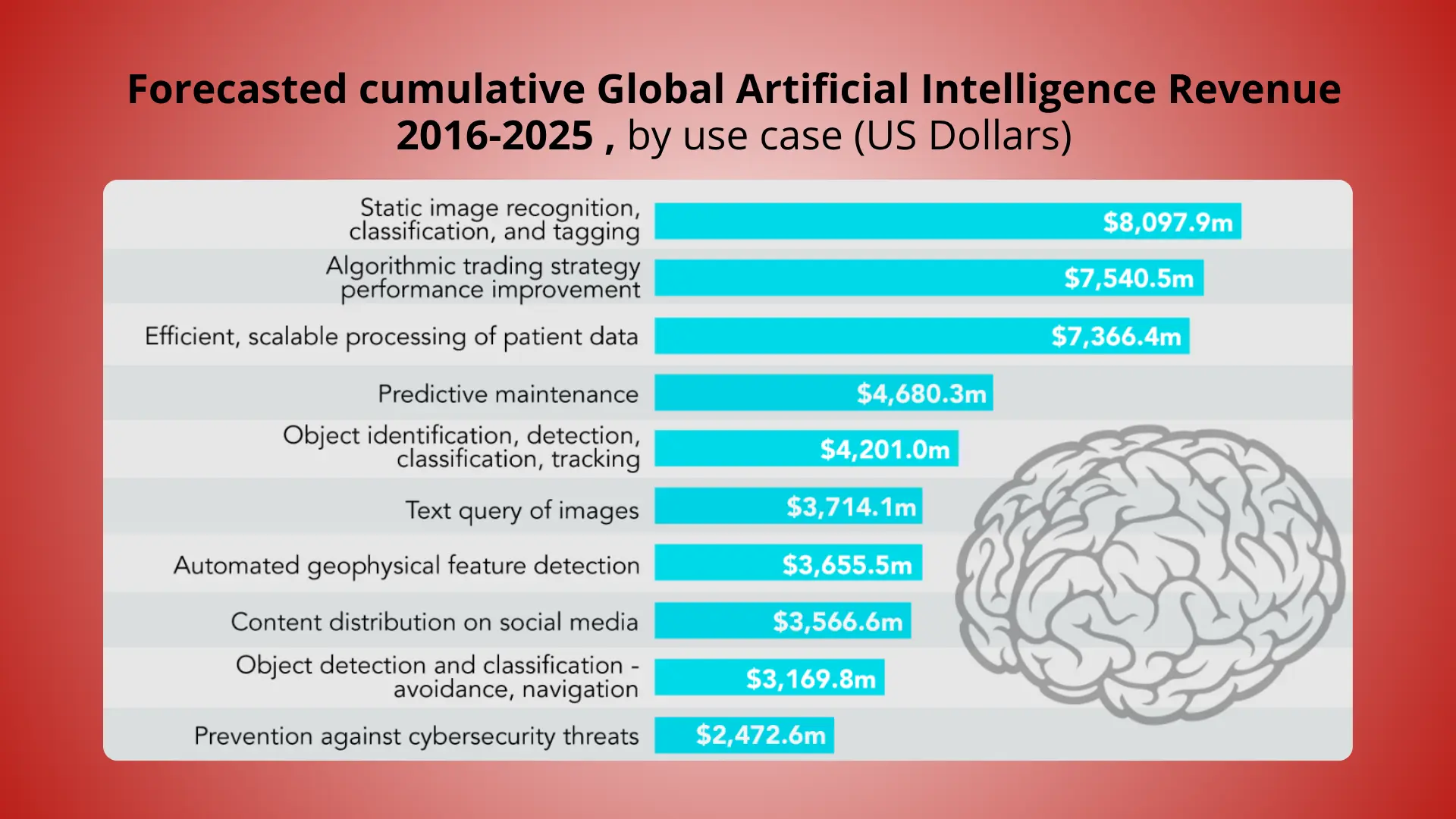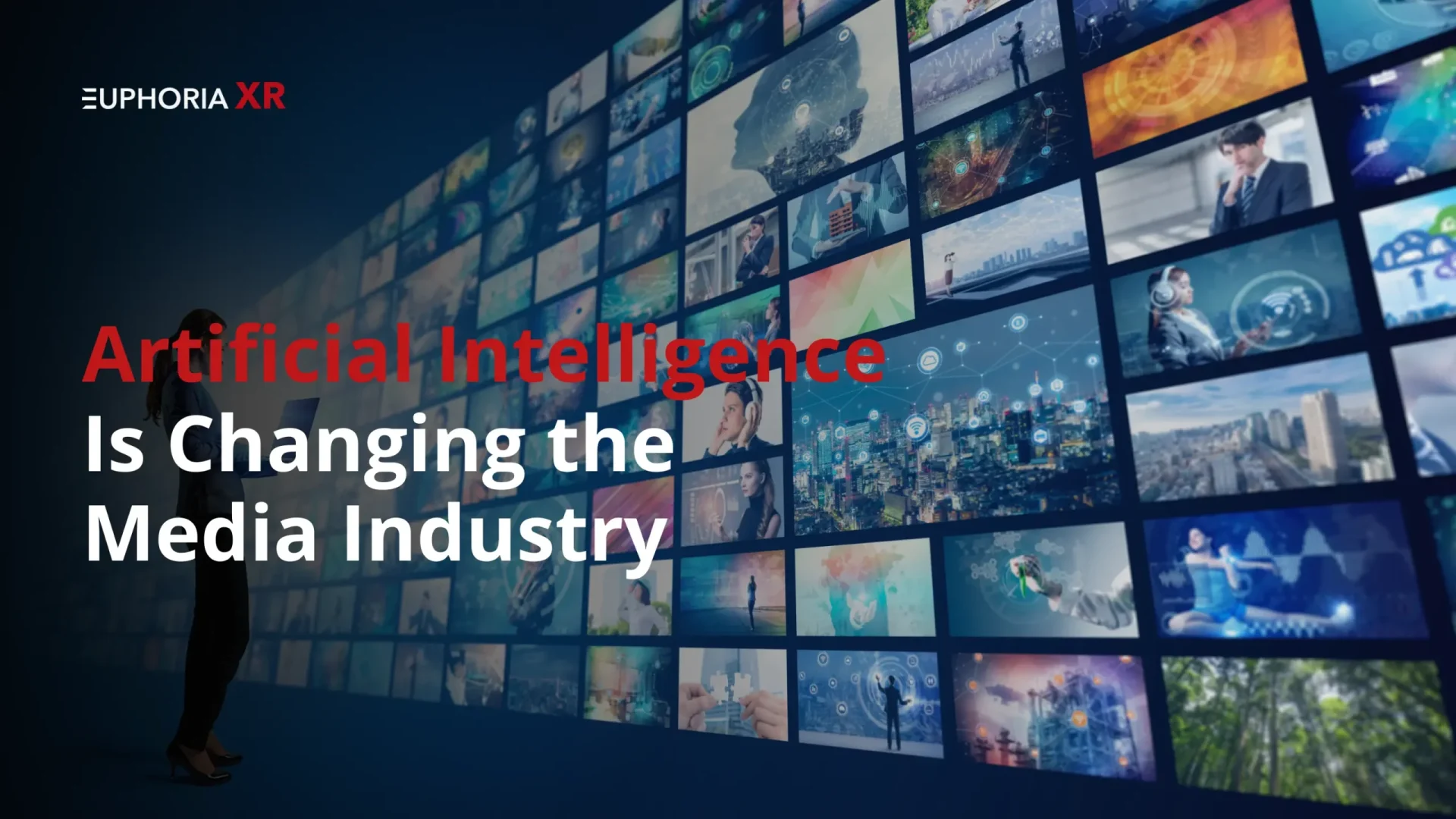Is a robot creating your magazine and composing your news? This is not science fiction anymore, despite what you may think.
It’s all creating quite a stir in the emerging era of Artificial Intelligence in the media, where activities are going to the very extent of changing norms of who writes the stories, how the headlines are selected, what content you get to see, and even how your local newspaper looks. It works quickly, it works very powerfully, and it raises really big questions for journalists, readers, and publishers.
And here’s the thing no one is talking about: while AI is rendering media brighter and faster, it also brings threats to society, such as risks from misinformation and loss of jobs.
So what’s going on behind the scenes? Well, this blog will tell you how Artificial Intelligence in media really works, where it is already applied, and what its potential impacts may include for the content you consume every day-whether it’s read on paper, scrolled by on your phone, or watched on a screen.
Let’s break it down together-simple, clear, and without the jargon.
What is Artificial Intelligence in Media?
Artificial intelligence in media can be described as intelligent computer applications aiding in content creation, publishing, and of wide interest to even business decision-making. These AI layouts can enhance the speed of media tasks; however, they also assist media companies in understanding what their readership wants, in automating monotonous processes, and, to some extent, predicting what will become trendy.
Now imagine a newsroom that can scan millions of online posts, recognize breaking news, and even write a rudimentary article in minutes. That’s what AI is truly capable of doing.
Over 30% of media and entertainment companies actively invest in AI tools to remain competitive in a fast-paced environment, according to PwC.

AI in Journalism
The quick evolution of journalism is primarily due to artificial intelligence. AI tools assist newsrooms in achieving improved work quality at accelerated speed rates. Leveraging AI delivers breaking news and increases audience participation while becoming an essential tool for journalists in their digital work.
AI in Newsgathering
Finding precise factual information right away remains fundamental to successful journalism. Reporters used to spend hours performing manual fact verification and following unlimited source materials to locate breaking news.
Three major AI tools named NewsWhip and Dataminr, and CrowdTangle, provide reporters with the following capabilities:
Thousands of website sources, together with social media content, become visible in only a few seconds thanks to AI scanning tools.
Real-time detection of trending topics happens automatically
The system provides immediate notifications concerning key information and population reactions
The system identifies recurring trends in data that reporters need to explore in detail.
Example: AI technology at the BBC allows the organization to detect emerging news through online local discourse before mainstream outlets cover it.
The decreased need for investigative work allows reporters to invest additional time in producing valid stories holding significant value.
AI in News Production
Several news stories possess a set format that enables AI systems to create quick content about sports coverage, financial summaries weather reports. The current advancements in technology enable AI to generate such content.
The Natural Language Generation platform allows tools such as Arria and Wordsmith to achieve the following functions:
This AI technology turns unstructured data points into easily understandable written news content.
Users can generate error-free brief reports instantly through the program.
The content distribution process includes the translation and adaptation of articles into various linguistic forms.
Fact: The Associated Press (AP) expanded its earnings reports from 300 to 3,700 articles each quarter with artificial intelligence tools instead of growing its reporter staff.
Human reporters now dedicate their time to essential storytelling and investigative reporting, alongside conducting interviews, because this technology frees up their capacity.
Audience Engagement in Journalism
The content generation capabilities of AI extend to audience targeting, which ensures that the proper recipients view the content.
These tools help users through their operations: Parse.ly and Chartbeat, as well as AI-powered CMS platforms.
Tools examine which articles readers elect to share and click while following content to the end.
The platform uses reader interests to recommend appropriate content selection.
Different variations of headlines and images need testing to identify optimal performance levels.
The system delivers adapted push alerts and news subscription services to each user.
The outcome results in increased audience retention and satisfaction, together with longer site visit duration.
AI-powered personalization has become essential because people primarily get their news from mobile devices.
Controversies in AI-Powered Journalism
AI in journalism delivers various positives however, it also brings several adverse effects to news production.
There are serious concerns around:
The technology selects incorrect data and outdated information.
AI programs trained with biased information will demonstrate these previous errors during future operations.
Public viewers remain unaware of which stories stem from human writers versus AI-based contributions.
The replacement of entry-level journalists through AI remains a security concern for many people.
CNET encountered major criticism in 2023 when it stealthily released articles made by AI systems that contained inaccurate content.
Multiple experts advocate for implementing defined regulations together with human personnel to handle the potential dangers. AI tools provide helpers to journalists, while the human elements of publisher decisions and code of ethics should remain unchanged.
The thought that we should implement AI by today has merit since initiating AI adoption has become simpler than people may anticipate.\
How AI Is Used in Print Media
The printing industry develops in a silent manner that carries a strong impact. Print publishers actively use AI technology during the planning process to select content better and optimize production while personalizing page content.
Data-Driven Content Planning
Print publishing begins with deciding which stories, along with advertisements, will appear within specific sections.
AI assists by:
Examining previous reader behavior.
The method forecasts content classifications that will generate the most success.
The computer system provides formatted designs to enhance advertising space positioning.
The usage of data-driven planning by print publishers leads to improved ad response rates between 20–30 percent, according to Deloitte report findings.
Considering the scenario with operational data instead of mystical powers provides editors with exceptional planning abilities.
Automated Layouts and Design
The process of designing newspapers or magazines requires significant amounts of time. AI technology speeds up the creation of designs while enhancing their innovative nature.
The automation systems of Adobe Sensei and Canva AI provide features to:
Generate page layouts automatically
Your branding can benefit from selected color schemes together with appropriate fonts that match its established style
Different page sizes can adapt how images fit on the layout.
While designers will continue working on their projects, the transition to AI-based tools creates more space for creative design objects rather than time-consuming operational tasks.
Predictive Maintenance
Printers are huge machines. The breakdown of printing equipment in the middle of a job run produces major delays while wasting large amounts of paper.
AI-powered systems are used to:
Live monitoring tracks the performance of all machines.
AI systems provide forewarning about equipment failures before they occur.
Systems notify maintenance specialists about impending equipment failure.
Companies implementing AI-based maintenance systems experience a 30% decrease in equipment breakdowns, according to McKinsey research.
Staff save funds, and delivery deadlines stay intact due to this technology.
Personalization in Printed Content
An AI system enables the actual process of customized printing.
Print publishers can achieve personalization by analyzing consumer data from shopping records and geographical locations, and reading activities.
Customize catalogs with relevant products
Send targeted direct mail offers
Magazine publishers can generate customized covers and inserts for their publications through AI technology
AI provides personalized mail offerings that resemble the recommendation systems found on Amazon.com.
Content that feels made specifically for individuals drives higher levels of sales engagement because people respond more when content addresses their unique needs.
The search is on for a machine learning developer who can create absolute breakthroughs with code that organizes beyond lines of programmed instructions. Let’s find your AI fit.
How to Use AI in Media Organizations
AI implementation in media operations maintains an approachable nature. The starting point should be to pinpoint time-consuming activities such as short report writing, audience analytics, and layout development.
AI systems assist media operators by drafting articles automatically. They also manage social media content scheduling, newsletter personalization, and headline suggestion functionality.
Testing a single AI area helps you determine its value before deciding about expansion. Finally, the work should pass through human editor supervision for maintaining quality standards and keeping a consistent voice throughout.
The Relationship Between Media Organizations and Tech Companies
Google, along with Adobe and OpenAI, provides almost all AI tools currently being used throughout media organizations. The media partnerships enable companies to leverage cutting-edge technologies while sparking ongoing security concerns.
Various tech platforms gain direct control over how content appears on the Internet. Media organizations that put excessive trust in outside tools give up essential control over their content’s distribution, along with its ranking position and creation process.
Media organizations should find a balance between efficient operation and independence by demanding fair, transparent partnerships with their AI service providers.
AI in Media: Trends to Watch in 2025
Media workflows will experience a deep integration of AI technology in 2025.
The rise of AI brings users’ voiceovers created from text in articles alongside translation automation for worldwide readers and visual content design through basic textual instructions.
The media sector is experiencing a major shift toward personalized content recommendations, which AI systems provide using user readings and customize headlines for multiple audience demographics.
How AI technology should deliver content is more important than speed. Media organizations must maintain their focus on ethical decision-making and fact-based reporting during the ongoing development of these digital content production tools.
Challenges and Ethical Considerations
The media sector gains substantial advantages from AI implementation, yet it introduces substantial real-world problems
The primary obstacle to surmount is achieving precise outcomes. When AI retrieves data from outdated or biased sources, it can produce content that misinforms its readers. AI produces false video or audio appearances, while plagiarism emerges when AI reproduces existing material without source acknowledgment.
AI technology causes a major concern regarding displaced human labor in the workforce. AI technology can manage straightforward content generation along with textual revisions, but the removal of human writers and creative workers damages audience faith in authentic work.
Media companies now establish AI guidelines because they want to guarantee their content maintains fact-based accuracy while remaining transparent and responsible in its creation process.
Other Technologies Reshaping Media
Technology beyond AI has transformed media platforms as well.
Media companies now use Augmented Reality (AR) technology to enable smartphone users to scan and interact with their printed content.
Virtual Reality applications activate storytelling practices to construct documentaries along with immersive reporting narratives.
5G technology delivers real-time content alongside faster mobile streaming capabilities.
Through blockchain technology, content creators can authenticate their copyright ownership to combat piracy through their digital content.
These tools, married with artificial intelligence, power new dynamics for content creation, sharing, and consumption.
Tired of vague AI promises? Choose an AI development company that delivers transparent business-oriented solutions that align specifically with your operation.
Conclusion
The buzzword quality of artificial intelligence no longer exists since this real technology actively reshapes media platforms throughout their internal structures. Teams achieve better results and speed up their work because AI supports them from writing and design through to audience engagement and printing.
Advanced technology requires us to hold ourselves accountable.
The success of future media hangs on our ability to put AI to use properly for generating truthful, valuable human-oriented content.
Frequently Asked Questions (FAQs)
What is AI in media?
Media organizations leverage intelligent systems to generate content while also managing organizational structures for content delivery and distribution.
How is AI used in journalism?
Through AI technology, journalists can track breaking news stories and comprehend complex facts while creating personalized outputs and automated reports on sports and financial domains.
How is print media adopting AI?
Print media benefits from AI through automated content scheduling combined with automated design operations, while it enables customized magazine sections and advertisements and empowers automated printing machinery maintenance.
Can AI improve reader engagement?
Yes. Through AI technology, publishers determine preferred content choices for readers while running experiments to find the best-performing article titles and customizing newsletter editions to maintain audience interest.
What are the risks of AI in news production?
Uncontrolled AI implementation leads to several hazards, including the propagation of falsehoods and the enhancement of prejudice while displacing human workforces and generating deceptive content.















